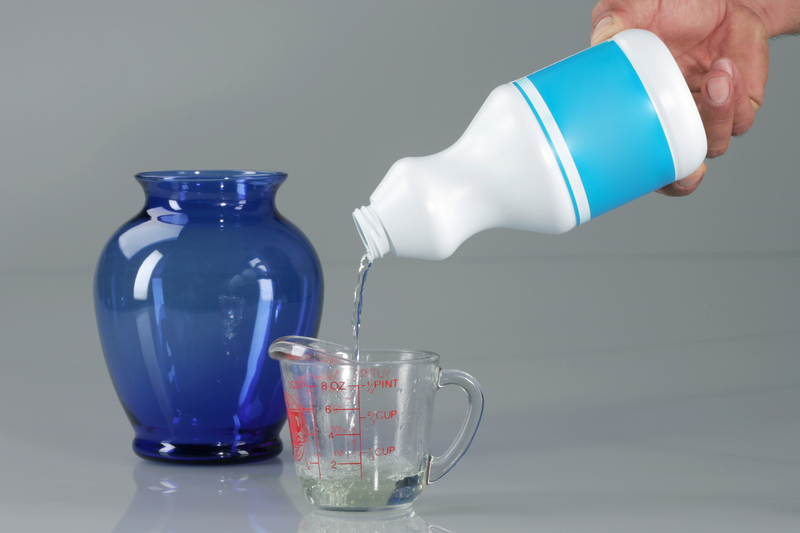Expert Tips: Removing Mould from Window Sills Effectively
Posted on 15/06/2025
Expert Tips: Removing Mould from Window Sills Effectively
Struggling with nasty black spots or unpleasant smells around your window sills? Mould isn't just unsightly -- it can pose health risks and gradually damage your home's structure. Fortunately, you can tackle this common problem by following some proven techniques. In this comprehensive guide, we will explore expert tips on removing mould from window sills effectively, prevention strategies, and long-term solutions to keep your windows mould-free for good.
Understanding Mould Growth on Window Sills
Before diving into the best methods for cleaning mould off window sills, it's key to understand why it appears in the first place. Mould is a fungus that thrives in damp, humid environments. Window sills, especially those exposed to condensation and poor ventilation, provide the perfect breeding ground for spores.
- Condensation: Warm air meets cold glass, leaving moisture that lingers on sills.
- Poor Ventilation: Stale air can't carry away moisture effectively.
- Organic Debris: Dust, dirt, and even old paint or wood can act as a food source.
Common signs of mould include black, green, or brown spots, musty odours, and peeling paint or wood rot. Addressing these promptly is essential to maintain both your home and your health.

Is Mould on Window Sills Dangerous?
Yes, untreated mould on window sills can lead to:
- Allergic reactions (sneezing, itching, red eyes)
- Asthma attacks or worsened respiratory conditions
- Structural damage to wooden sills and adjacent areas
- Decreased indoor air quality
That's why removing mould from window sills quickly and effectively is vital. Let's explore how.
Preparing to Remove Mould From Window Sills Safely
Before starting, protect yourself and your space. Mould spores spread easily, so thorough preparation is key:
- Open a window for ventilation (if possible).
- Wear gloves, protective eyewear, and an N95 mask to avoid inhaling spores.
- Cover nearby furniture and floors with plastic sheets or old towels.
- Assemble supplies: a spray bottle, cleaning solutions, scrubbing brush, microfiber cloths, and a vacuum with a HEPA filter.
The Best Methods for Removing Mould From Window Sills
Step 1: Choose the Right Cleaning Solution
The optimal product for cleaning mould off window sills depends on your material and preferences. Here are the most effective options:
- White Vinegar: A natural mould inhibitor that kills up to 82% of mould species. Perfect for most non-porous surfaces.
- Hydrogen Peroxide (3%): Powerful antifungal properties. Ideal for silicious (non-wooden) sills.
- Baking Soda: Gentle yet effective, especially for light stains or sensitive surfaces.
- Commercial Mould Removers: Specially formulated products (always follow usage instructions).
- Bleach Solution: A strong disinfectant, but use with caution. It's best for non-porous, non-painted surfaces only.
Never mix cleaning agents (especially bleach and ammonia), as toxic fumes can result!
Step 2: Remove Loose Mould and Dust
Gently vacuum the window sills using a HEPA-filter vacuum to remove loose spores, dust, and debris. Don't scrub at this stage -- disturbing dry mould can send spores into the air.
Step 3: Apply Your Chosen Cleaning Solution
- Pour your selected solution into a spray bottle.
- Saturate the mouldy areas on and around the window sill.
- Let the solution sit for at least 10-15 minutes to fully kill the spores.
If using bleach, a mixture of 1 cup bleach to 1 gallon of water is sufficient; vinegar and hydrogen peroxide can be used undiluted.
Step 4: Scrub and Wipe Away Mould
- Using a stiff, non-abrasive brush, scrub the affected area gently to lift stains and fungal growth.
- Wipe the area with a damp microfiber cloth. Rinse and replace the cloth as needed to avoid spreading spores.
- For stubborn spots, repeat the process or let the cleaning solution sit longer.
Tip: Never use the same brush or cloth elsewhere in your home after cleaning mould -- dispose of or sanitize these items thoroughly.
Step 5: Dry the Area Completely
Mould thrives on moisture. After cleaning, dry the window sill thoroughly with a clean, dry cloth, and keep the window open or use a fan to speed up the drying process. Do not repaint or refinish until you're certain the area is dry and mould-free.
Special Considerations for Wood, UPVC, and Painted Window Sills
Wooden Window Sills: Avoid over-saturating with liquid. Use vinegar or hydrogen peroxide sparingly to prevent water damage. After cleaning, treat the wood with a fungicidal sealant if required.
UPVC/Plastic Window Sills: These can handle stronger solutions like diluted bleach or commercial mould removers.
Painted Sills: Test your cleaning product in an inconspicuous area first to ensure it doesn't damage or strip the paint.
How to Prevent Mould from Returning on Window Sills
Effective mould removal from window sills should always be followed by preventive measures. Here's how to keep window sills mould-free for good:
- Maximize Ventilation: Open windows regularly or use extractor fans, especially in kitchens and bathrooms.
- Use a Dehumidifier: Maintain indoor humidity below 60% to inhibit mould growth.
- Fix Leaks Promptly: Repair cracked window frames, faulty seals, or leaks that cause dampness.
- Clean Regularly: Wipe down sills every week with a vinegar solution to discourage spores from settling.
- Keep Curtains and Blinds Open When Possible: Sunlight naturally helps reduce moisture and mould.
Prevention is always easier and less costly than constant remediation.
Expert Advice: When to Call a Professional
In most cases, you can remove minor mould growth from sills yourself. But some situations warrant professional mould removal:
- The area affected is larger than 1 square metre (approx. 10 square feet).
- You have recurring mould despite cleaning and prevention steps.
- Mould keeps spreading or penetrates behind walls, under floors, or inside ventilation ducts.
- You or family members show persistent health symptoms (coughing, allergy, headaches) that improve away from home.
Professionals have the training, equipment, and treatments to address severe or underlying infestations, often using commercial-grade fungicides and moisture metres to ensure the problem is fully resolved.
Natural Alternatives for Mould Removal
If you prefer eco-friendly methods, opt for these solutions:
- Tea Tree Oil Spray: Mix 1 teaspoon of tea tree oil with 1 cup of water. Spray and leave to dry (no rinsing needed).
- Grapefruit Seed Extract: Mix 20 drops in 2 cups of water for a non-toxic, anti-fungal cleaner.
- Baking Soda Paste: Mix baking soda with water to a paste, apply, and scrub gently.
These natural solutions work best for light growth and as regular maintenance, rather than for heavy infestations.

Frequently Asked Questions About Removing Mould from Window Sills
Is bleach the best way to remove mould from window sills?
Bleach is effective on some non-porous surfaces, but vinegar is often safer for indoor use and doesn't emit toxic fumes. For wooden sills, avoid bleach as it can damage fibres and not penetrate deeply enough to kill roots.
What kills black mould on window sills?
Vinegar, hydrogen peroxide, and commercial mould removers are all effective. For persistent mould, consider combining cleaning (scrubbing with vinegar or peroxide) with improved ventilation to address the root cause.
Can I paint over mould on window sills?
No! Painting over active mould only hides the issue temporarily. The underlying spores will continue to grow, undermining paint and potentially causing more severe problems down the road.
How often should I clean window sills to prevent mould?
Wipe window sills every week or more frequently in humid seasons. Quick action at the first sign of condensation or spotted growth is vital for effective prevention.
Conclusion: Say Goodbye to Window Sill Mould
By following these expert tips for removing mould from window sills effectively, you can tackle both the visible stains and their underlying causes. Remember, the keys are:
- Thorough and safe cleaning using proven solutions
- Drying the area completely to prevent regrowth
- Maintaining a dry, well-ventilated environment
- Prompt action at the earliest signs of recurrence
Keep up a regular maintenance routine and address any moisture problems swiftly. With a little diligence, your window sills can stay clean, fresh, and mould-free -- protecting both your home's beauty and your health for years to come.
For more comprehensive advice or persistent issues, never hesitate to contact a certified mould remediation professional. Health and property preservation always come first!




